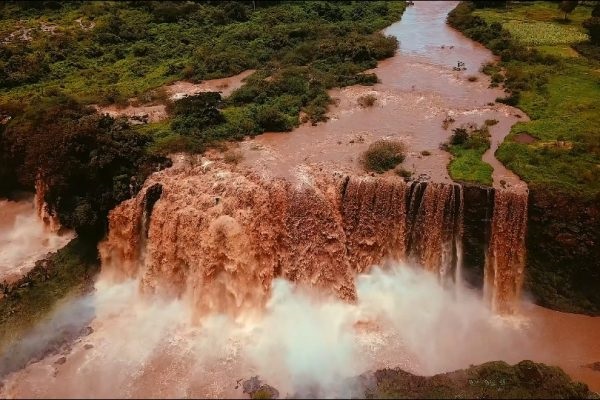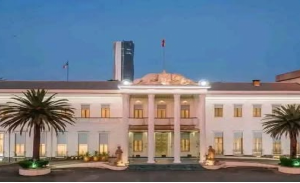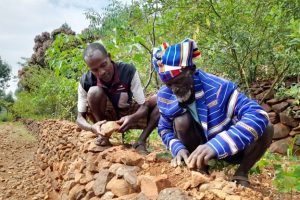
BY TEWODROS KASSA
Ethiopia is characterized by three distinct seasons. These are locally known as Bega (October to January), Belg (February to May) and Kiremt (June to September). The rainfall pattern is also named according to their rainfall distribution. The short rains season, known as the Belg, runs from February to May. This is, then, followed by the long rains season, known as the Kiremt, which is between June and mid-September. During the period from June to August, Ethiopia enjoys its summer monsoon season, when rainfall is at its heaviest; and thunderstorms often occur. Whilst it is quite cloudy at this time of year, visitors can usually enjoy at least a couple of hours of sunshine each day, mostly in the morning.
During the Ethiopian high rainfall season (Kiremit), the rain increases and the funnels of flood arising from Ethiopian highlands flow zigzag down to the lowlands. The smallest rivers flow aggressively eroding and carrying the nation’s productive topsoil. When the summer season starts, it is not uncommon looking turbid floods gushing out from every corner making their destination the flanks of bigger rivers. The bigger rivers similarly ebb out towards the lowlands unloading what they gather along their journey. Receiving tributaries’ supply, the bigger rivers too conspire to facilitate the outflow of the country’s alluvial soil.
One of the fascinating manifestations of the summer season in Ethiopia is the mysterious inundation of temporary and permanent rivers as well as springs that result from the season’s high rainfall. Feasting eyes on the scenery and greenery of the surrounding impresses one to keep on admiring mother nature.
The availability of enormous springs during the summertime manifests the landscapes’ great potential of gathering water. If the terrain is not exposed to erosion, fenced off from human encroachment and spared from deforestation the land could manage to hold the rain water.
If the parcel of land is well protected and conserved, it will have the capacity of compressing and holding water for a longer period of time. Thus, the land would turf out the water when the water becomes excessive.
Summertime in Ethiopia is manifested by greenery and sprouting crops as well as small shrubs and grasses. The memorable gift of such rainy days is the availability of puddle along the trough. It just creates a razzmatazz. United, children enjoy the moment gamboling on the puddles. Farmers tend their farming intensively. In addition, during the end of the season, the flowers of crops and trees blossom, turning mesmeric. This is possible after the retreat of the huge rain and cold weather condition.
The summer downpour of the country begins at the beginning of June and last over until September. With the ensuing of warm weather, the season wraps up letting crops to be fruitful.
On the other hand, this season strips the country of fertile soils, decisive for the blossoming; and fruitfulness of crops. Crops growing on the eroded areas give less return or less harvest. Astonishingly, plants’ growth during this season is swift. Thus, walking along the broad-leaf forest areas of the country is very much refreshing during the summertime. The way rain droplets, dangling from trees in the forests, might dampen your body but they still create special impressions.
Experts in the forestry sector stressed that a coordinated taskforce is required to stop the aggravating soil denudation caused by the high rainfall in the Kiremit season. Thus, undertaking massive reforestation activities is fundamental to preserve the country’s non-renewable soil resource. Forests are non-exchangeable assets of a nation. The nation needs to focus on planting trees. It as well must see to their growth to alleviate erosion. Trees have a proper response to the aggressively flowing floods. They tackle its speed with their leggy roots.
During the entrance of the summertime the color of rivers in the country turns turbid telling the increasing of the erosion of soil. From the very place the rains land, they collect what they find along their way. Thus, this situation poses a question mark on farmers’ production potential and productivity.
Ethiopians have been doing a lot regarding soil conservation and protection. Making terraces along with steeply plateaus like the Konso terrace, promoting afforestation as well as other recovery mechanisms and activities to handle soil erosion have served effectively in managing the outflow of soil.
Ethiopia loses billion tones of cultivatable soil every year. Soil erosion is one of the primary critical problems. It is the main factor to the dwindling away of productive lands.
The River Abay, internationally known as Blue Nile, takes the lion’s share of soil erosion in the country. This is due to higher percentage of the river’s catchment area and drainage capacity along the nation’s highland areas. It flows making its origin at the area located in the Amhara State, East Gojjam District at a place called Gish Abay.
Super imposed it passes over the Ethiopian largest Lake Tana. It overlaps with the lake and flows some kilometers on it, one of the wonderful scenes of wandering water bodies. An astounding event takes place there. That is the magical showcase of the two water bodies -liquid sustaining movement in detachment. With naked eyes, from a distance, the two water bodies are easily identifiable different. Surprisingly they never mix with each other. They coexist respecting each others’ differences.
In addition to conserving resources protecting and preserving the rivers from pollution and contamination with trashes and other odd elements should also be given due consideration. Thus, to sustain the mesmeric natural milieu, there is a call for bolstering environmental protection efforts effectively and efficiently.
In sum, the more a person strives on protecting his/her surrounding and the environment the more benefit will be acquired from nature. Doing the most regarding soil preservation and protection could enhance securing multilateral benefits from our surrounding. Producing adequate crops is possible if the land is protected from wearing away.
THE ETHIOPIAN HERALD FRIDAY 29 JULY 2022





